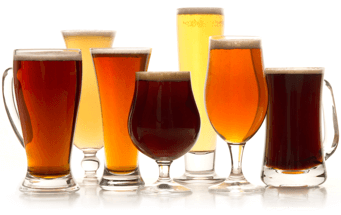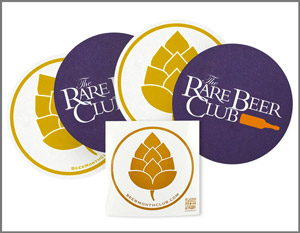Brouwerij Boon - 2012 Geuze Mariage Parfait
-
ABV:
8% -
Serving Temperature:
50–57° F -
Suggested Glassware:
Tulip, Flute, or Chardonnay Glass
We always love revisiting these releases. Boon’s vintage Geuze Mariage Parfait is one of the most expressive lambic offerings out there: 100% spontaneously fermented, aged for at least three years in oak, and sporting a best-by date 20-plus years into the future. Traditional, very tart and funky and complex, and with a balance of acidities and fruits that evolves with time.
As we understand, throughout the U.S. only about 150 dozen-bottle cases of this 2012 vintage escaped the thirsty gravitational pull of The Rare Beer Club as we gobbled most of it up for our members. We hope you enjoy one of our favorite lambics.
This basically looks like nectar. After the whisps of head fade, after the effervescence below subsides, this really does look like some sort of orange nectar: golden and bright and sunny.
It’s almost like it’s gilded. The aromatics on this are just expansive: salty, citrusy, clenchingly tart, with just layers and layers of fruit-driven sourness, brine, and 100%-pleasant funk. This conjured memories of sharp bleu cheeses, tucked in there with honeyed cantaloupe notes, a pervasive sour-citrus core. The nooks in the aroma were endless. As this warms, that citrus, lemon-like approach further opens up to offer more underlying toastiness and soft oak.
If we had a geuze vault, and didn’t have enough time to make the grandiose number of dear, lambic-loving friends required to empty said geuze vault—like, enormous amounts of geuze, we’re talking here, such that we’d be too busy drinking geuze to give away all our geuze. Well if that were the case—wouldn’t that be great? RIGHT? We could totally go for a geuze vault.
In any event, this is delicious, and we’d make plenty of room for it in our eventual geuzeum. Despite the generous degrees of tartness here, the mouthfeel is just seamless, plus incredibly inviting: smooth vanilla-tinged oak and ripe fruitness fill in any gaps here left by effervescent bubbles and the jolting acidity. Everything’s tied together right, the rudder’s a massively sour lemon, and there are endless appointments to check out: notes of ripe apricot, sour peaches, lemon zest. We can only look forward to how the 2012 Geuze Mariage Parfait will age going forward.
As noted above, our Rare Beer Club members should feel confident setting down some of these bottles for years to come. This is certainly one of the most promising cellar options as of late that comes to mind—though that may also be because we’d generally fill our garages with cases and cases of lambic if circumstances permitted. A great example to watch ripen.
There’s something about lambic…
Actually, there are a whole bunch of things about lambic. Part of it is the unknown: the fact that traditional lambic production involves spontaneous fermentation, with local wild yeasts and bacteria coaxed from the passing air. (It can often seem a bit like sorcery.) Part of it is the patience required: those yeasts and bacteria frequently take their good sweet time fermenting, with blended offerings like geuze incorporating barrels of lambic that can be three or more years in the making. Part of it is the blending: that learned art of tasting and combining older and newer barrels of lambic, of creating something tastier than the sum of its parts. And part of it is the long-awaited result: sour, funky, refreshingly complex beer that’s unlike any other.
We’re excited to share with our members this month an especially rare example hailing from the heart of lambic country. Frank Boon and his brewery, along with the folks of Cantillon and Drie Fonteinen, are often regarded as saviors of this finicky, time-intense means of beer production. As hard as it may be to believe while actually drinking traditionally made lambic, for many years it was on a slow and spiraling departure from this world, both from brewery closures and from market pressures to artificially sweeten the final product. Today, it’s instead a new dawn for Belgian lambic producers, with Boon helping to lead the effort.
Brouwerij Boon finds it distant roots as a brewery extending back to 1680, as a farm-brewery and distillery in Lembeek, a small village about thirty minutes southwest of Brussels. The tax situation at the time was encouraging to brewers and distillers alike, and there remains debate as to whether the term lambic originated from the village name itself or from the “alembic,” a distillation device preceding the pot still. Either way, Lembeek still maintains its close ties with lambic. Frank Boon purchased the brewery in 1975, and his location currently sits near the shore of the River Senne: a nexus of wooden barrels and cherry trees.
Today Boon creates various different lambics, including geuze, kriek (made with cherries), framboise (with raspberries), and faro (with spices and candy sugar). Some are sweeter, while others are bone dry. All of them can take some significant effort to track down. At the tippy-top of their authenticity-minded lambic production is one of our selections this month: Geuze Mariage Parfait. Mariage Parfait is French for “perfect marriage,” and we hope you’ll agree that they couldn’t have picked a more appropriate name.
Gueuze tends to be pretty humbling. The same could be said, personally, for IPAs, plural IPAs, Berliner weisse probably, grodziskies more likely than not, and countless less known things. The percentage of the international beer world one can cover on one liver is pretty modest: there’s now an IPA of every Pantone color, one could assume; there are lobster-y beers; there are bull-testicle-y beers. Those of us following the industry tread weird waters.
Beer expertise is often decentralized, whether stylistically speaking or subject to distribution constraints and one’s postal budget. Even ‘experts’ still find massive turf to further dig into.
Which brings us to gueuzes. Zesty, delicious, humbling gueuzes. As of late, these generally bring me back to a recent (blind!) gueuze tasting some friends hosted. Humbling, humbling gueuzes. I picked, I think, the Drie Fonteinen sample correctly, and maybe a fresh Cantillon if the memory’s not being overly generous. It was, to be fair, a loss for both sides. Nearly all the guesses regarding producers were at least slightly off-base (mostly wrong). The gueuzes, a broad mixture of curated and grocery-aisle pickups, were magnificently off at their worst.
One or two seemed mean.
I tasted more gueuze that night, though, than I’d be likely to cross again over the following six months, unless I consistently steered that way. It can be a challenge (arguably adventure material) to track down some of the tougher styles if not near the main source. What I find does work, if often in humbling fashion, is this: crowdsouring a bunch of different gueuzes (or whatevers) with friends. Taste through them with an open mind and the labels hidden.

Unmatched Variety by style, brewery & country
Choose from Five different Beer Clubs offering unmatched variety by brewery,
country of origin, and beer style to suit your specific tastes.


